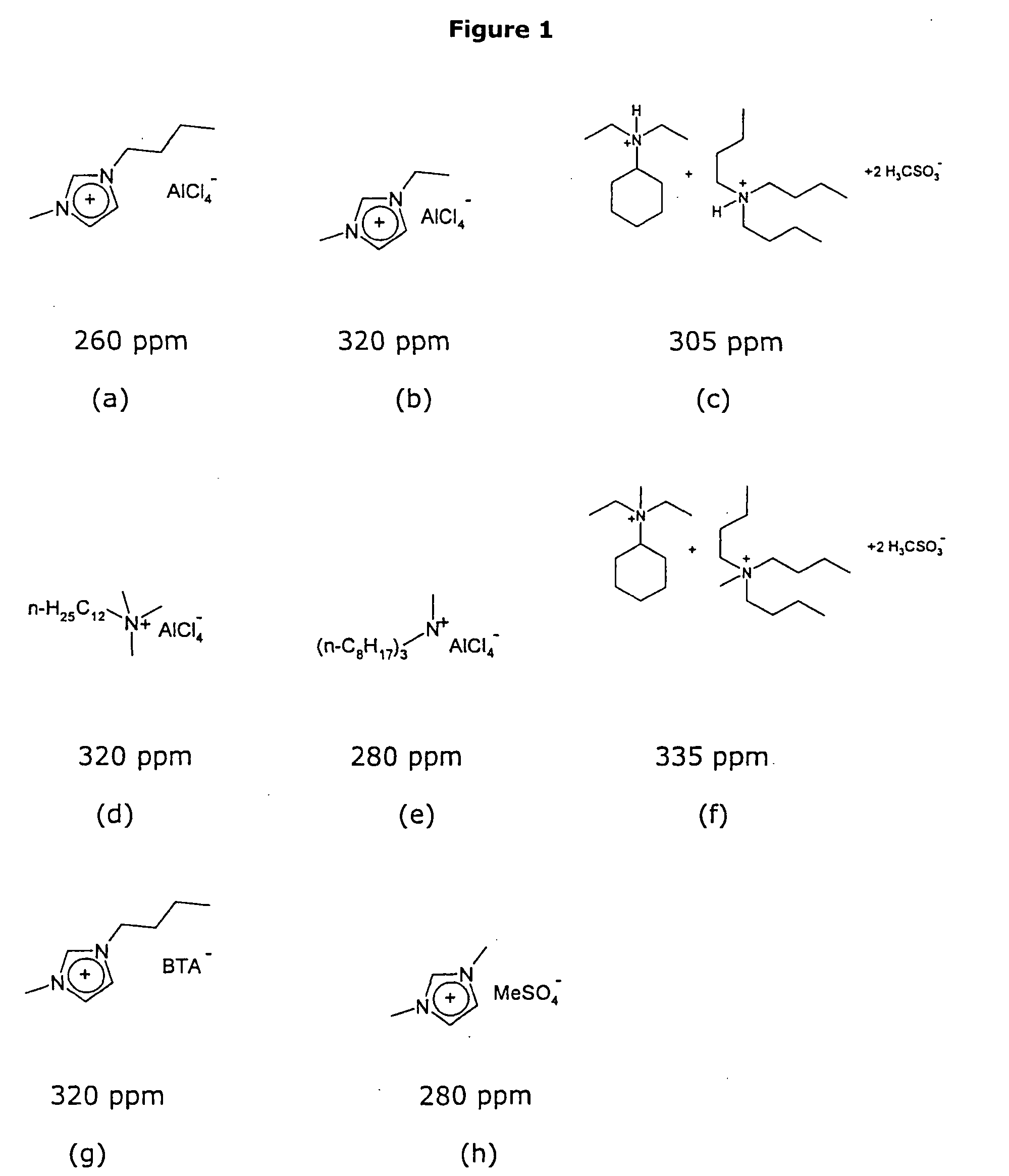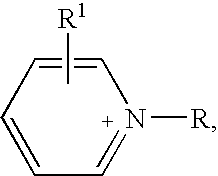Process for removing polar impurities from hydrocarbons and mixtures of hydrocarbons
- Summary
- Abstract
- Description
- Claims
- Application Information
AI Technical Summary
Benefits of technology
Problems solved by technology
Method used
Image
Examples
Embodiment Construction
1. Desulfurization of Dibenzothiophene in n-dodecane
Using the desulfurization of the model component dibenzothiophene dissolved in n-dodecane as an example, the performance of our invention shall be demonstrated. FIG. 1 shows the structures of some of the ionic liquid employed and the thus achieved sulfur contents after one extraction starting from a sulfur content of 500 ppm. In this case, the dibenzothiophene serves as a model component for a compound which is difficult to desulfurize by the classical dehydrogenation method.
Examples of Ionic Liquid Employed
(a) 1-Butyl-3-methylimidazolium tetrachloroaluminate; (b) 1-ethyl-3-methylimidazolium tetrachloroaluminate; (c) diethylcyclohexylammonium methanesulfonate / tributylammonium methylmethanesulfonate; (d) dodecyltrimethylammonium tetrachloroaluminate; (e) trioctylmethylammonium tetrachloroaluminate; (f) diethylmethylcyclohexylammonium methansulfonate / tributylmethylammonium methanesulfonate; (g) 1-butyl-3-methylimidazolium BTA; ...
PUM
| Property | Measurement | Unit |
|---|---|---|
| Temperature | aaaaa | aaaaa |
| Temperature | aaaaa | aaaaa |
| Temperature | aaaaa | aaaaa |
Abstract
Description
Claims
Application Information
 Login to View More
Login to View More - R&D
- Intellectual Property
- Life Sciences
- Materials
- Tech Scout
- Unparalleled Data Quality
- Higher Quality Content
- 60% Fewer Hallucinations
Browse by: Latest US Patents, China's latest patents, Technical Efficacy Thesaurus, Application Domain, Technology Topic, Popular Technical Reports.
© 2025 PatSnap. All rights reserved.Legal|Privacy policy|Modern Slavery Act Transparency Statement|Sitemap|About US| Contact US: help@patsnap.com



